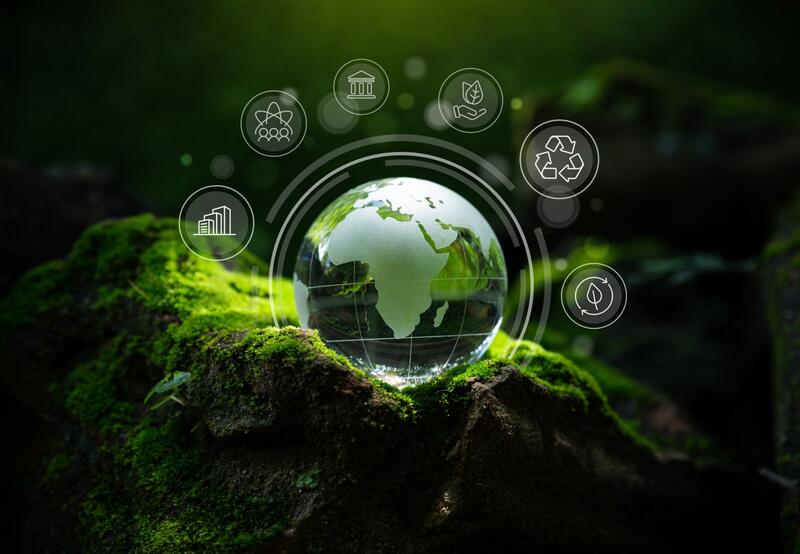
Before we dive into specific applications of the concept of Syntropy, I'd like to spend a bit more time diving into what the force of Syntropy actually is than we did in our introductory post for the year.
Frankly, there isn't a lot out there to guide us in our exploration of this topic. Even Wikipedia has very little to say, and the dictionary definitions are radically incomplete at best. Google searches will yield thousands of entries that are merely commercial co-optings of the term (including a popular software program), confusing the issue further. But there are some who have left clues for us along their way. There seems to be some disagreement about whether the term was coined by Buckminster Fuller, Italian mathematician Luigi Fantappiè, or Hungarian scientist Albert Szent-Györgyi. But the concept certainly came into discussion in the 1940s through the work of Fantappie, Erwin Schrödinger, and others. Syntropic consciousness is sometimes paralleled with the ideas of Teilhard de Chardin (ie the future-originating Omega Point), which we will look at in
and the dictionary definitions are radically incomplete at best. Google searches will yield thousands of entries that are merely commercial co-optings of the term (including a popular software program), confusing the issue further. But there are some who have left clues for us along their way. There seems to be some disagreement about whether the term was coined by Buckminster Fuller, Italian mathematician Luigi Fantappiè, or Hungarian scientist Albert Szent-Györgyi. But the concept certainly came into discussion in the 1940s through the work of Fantappie, Erwin Schrödinger, and others. Syntropic consciousness is sometimes paralleled with the ideas of Teilhard de Chardin (ie the future-originating Omega Point), which we will look at in  greater detail in the coming months. It is often given the shorthand definition of harmony or “order out of chaos,” but there is so much more to be unpacked and much greater treasure to be yielded.
greater detail in the coming months. It is often given the shorthand definition of harmony or “order out of chaos,” but there is so much more to be unpacked and much greater treasure to be yielded.
I am neither a mathematician not a scientist, but one need not be to understand and observe the twin complementary forces of entropy (coined in the mid-1800s) and Syntropy in our bodies, our ecosystems, and our societal structures, from familial to global. Broadly speaking, entropy is the breaking down of systems, structures, and organization and Syntropy is the opposite–the formation and creation of sustainable, sustaining, and collectively-enhancing organization. Entropy requires more and more energy to be poured into it to keep going, while Syntropy generates energy that nourishes the system or organism.
This quote from the thought provoking essay “Syntropy and Sustainabilty” (DiCorpo and Vannini from the proceedings of the 58th conference of the International Society for the Systems Sciences, 2016) clearly illustrates the value of a syntropic consciousness and approach for the many challenges of our current global picture, environmental and otherwise:
It seems we are currently operating in an entropic state of breakdown and decay. Some areas of our world have been experiencing this slowly over decades, while others began during the pandemic and have been rapidly picking up speed. I can provide one very mundane personal example: for 50 years the mail was delivered 6 days a week like clockwork–“neither rain nor sleet nor snow…” kept it from coming. Then in 2018 it began to become a bit erratic and occasional days were missed here and there. Over the last 5 years it has deteriorated to the point where my area now only receives US postal mail one day a week. Entropy is a potent force, and if allowed to continue its runaway snowball effect, will lead to the dissolution of a system. Syntropy is the antidote–don't try to fight the entropy but instead create and implement structures that collectively enhance–that move towards life and the generation of energy–and that can become the powerful, quick snowball that effectively makes the entropy impossible.
This brings to mind the words of Dr. Edward Bach:
So, instead of trying to fix the entropy (which by its very definition is impossible), we must instead work on generating Syntropy. And how can this be achieved? What would it look like, in practical terms? I believe that one of the best contemporary examples and promises for a syntropic future is the idea of Ecological Civilization that has been growing in China. Though it first appeared on the scene in the 1980s, it has more consciously been integrated into Chinese culture and society since it was made a formal national development goal in 2012. There are now centers all over  China, as well as a museum, dedicated to this goal. Simply the conscious declaration of the leadership to want this sustainable, enhancing future started the snowball moving in the right direction. And we will definitely be looking more closely at ecological civilization and other practical implementations of the syntropic principle as we journey together this year.
China, as well as a museum, dedicated to this goal. Simply the conscious declaration of the leadership to want this sustainable, enhancing future started the snowball moving in the right direction. And we will definitely be looking more closely at ecological civilization and other practical implementations of the syntropic principle as we journey together this year.
As we explore, I invite you to start noticing examples of both Syntropy and entropy in your day-today life and getting to know this potent force and ally a little bit better.
